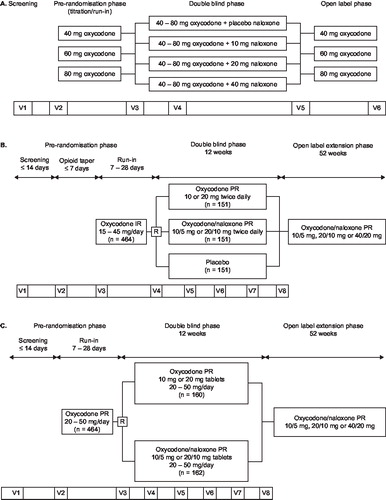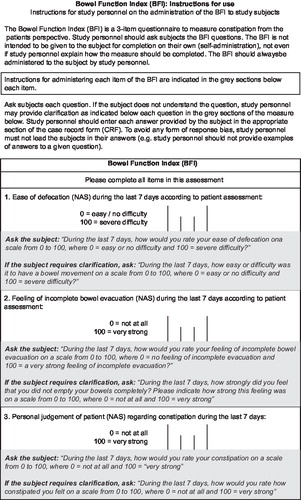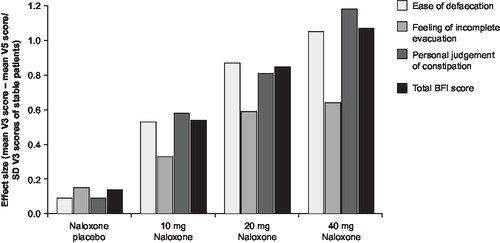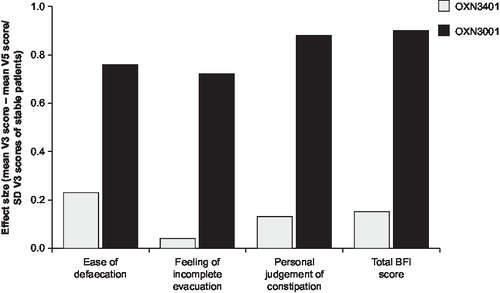Figures & data
Figure 1. Overview of study design. (a) Study OXN2401: six study visits (V1–V6) were undertaken over the course of up to 10 weeks. (b) Study OXN3401. (c) Study OXN3001 (R = Randomization).

Figure 2. The Bowel Function Index (BFI) tool. The BFI is a 3-item questionnaire to measure constipation from the patient's perspective. It is intended to be used by healthcare professionals to question patients and should not be used for patient self-administration.

Table 1a. Overview of patient visits and questionnaire completion by participants in study OXN2401.
Table 1b. Overview of patient visits and questionnaire completion by participants in study OXN3401.
Table 1c. Overview of patient visits and questionnaire completion by participants in study OXN3001.
Table 2. Demographic information / clinical parameters of patients included in the study.
Table 3. Correlations between each BFI item and internal consistency across studies OXN2401 (n=202), OXN3401 (n=460) and OXN3001 (n=323).
Table 4a. Reproducibility of BFI items visit 5 to visit 6 for patients randomized to (a) placebo.
Table 4b. Reproducibility of BFI items visit 5 to visit 6 for patients randomized to (b) those subjects who had no change in stool frequency between visit 5 and visit 6 in study OXN2401.
Table 4c. Reproducibility of BFI items visit 5 to visit 6 for patients randomized to (c) those subjects who had no change in stool frequency between visit 5 and visit 6 in study OXN3401.
Table 4d. Reproducibility of BFI items visit 5 to visit 6 for patients randomized to (d) entire subject group in study OXN3001 between visit 1 and visit 2.
Table 5. Determining known-groups validity of the BFI tool, constipation severity based on stool consistency (ANCOVA analysis).
Table 6. Spearman's rank order correlations of BFI items and clinical data of stool consistency, frequency and number of days the patients received laxatives in studies OXN2401, OXN3401 and OXN3001*.

